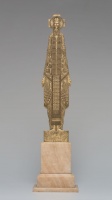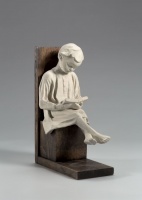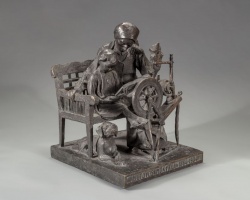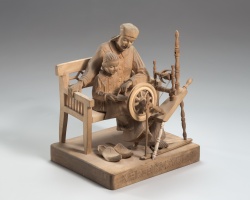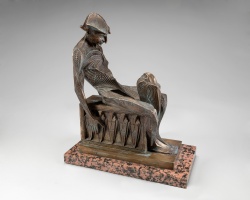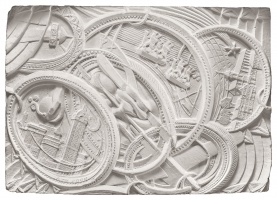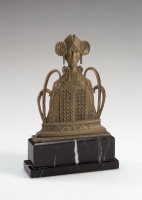
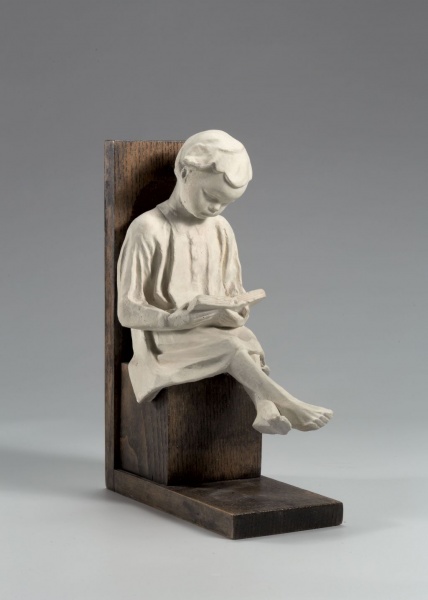

Fragment of a sculpture. Boy from Lithuanian School
| Author: |
Petras Rimša (1881–1961) |
| Created: | 1921 |
| Material: | plaster, wood |
| Dimensions: | 23 × 17 cm |
Petras Rimša (1881–1961) created a sculptural composition in 1906 to honour the mothers who defied the press ban in Lithuania by teaching their children to read in Lithuanian. His own mother, Magdalena Rimšienė, who was in her 70s at the time, posed for the sculpture. In subsequent versions, made in 1914, 1921 and 1939, the sculptor depicted a younger version of the spinning woman, infusing the bond between the boy and his mother with greater warmth. The sculpture was well received by his contemporaries, appearing at the First Exhibition of Lithuanian Art in Vilnius in 1907. It swiftly became a national symbol, representing the struggle against the press ban in Lithuania. Based on the uncensored typescript of the sculptor’s memoirs, Lijana Birškytė-Klimienė suggests that the book depicted in the sculpture is probably a prayer book.* Rimša described his work as depicting ‘a mother holding a spinning wheel, tilting her head towards her child, holding the thread with her left hand, and pointing with the fingers of her right hand to an open prayer book, probably teaching the child to read prayers. At that time, teaching children to read prayers was considered extremely important.’** Given Rimša’s religious fervour, the Catholic image of St Anne teaching the Blessed Virgin Mary to read as a child may have indirectly influenced the expression of the sculpture. A plaster version of it is held in the M.K. Čiurlionis National Museum of Art, while a bronze copy is held in the Lithuanian National Museum of Art. In 1939 it was decided to place the sculpture in the garden of the Kaunas War Museum to mark the 35th anniversary of the end of the press ban. A plaster model was created, and a bronze sculpture was cast, but at the outbreak of the war, the Germans took it away to put towards the war effort. Only in 1994 was the sculpture finally erected in the garden of the War Museum, thanks to Lithuanian schools collecting the nearly four tonnes of bronze and copper that was needed for it.
Text author Jurgita Ludavičienė
* 5/">https://nzidinys.lt/lijana-birskyte-klimienevizualus-edukacijoskonceptai-kas-bendra-tarppetro- rimsos-vargo-mokyklosir-sv-onos-nz-a-nr-5/ , accessed 2024-04-06.
** Juozas Rimantas, Petras Rimša pasakoja, 1962-12-16, in: Lietuvos nacionalinės Martyno Mažvydo bibliotekos Rankraščių skyrius (LNMMB RS), f. 47, b. 336, l. 227.
Source: Law firm Valiunas Ellex art album THE ART OF MATERIALS. Compiler and text author Jurgita Ludavičienė






